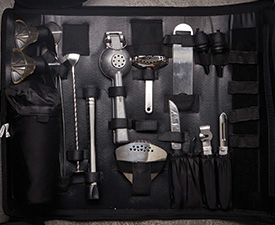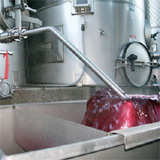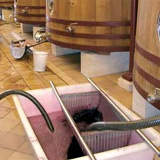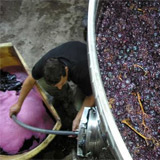Delestage is a great French word, meaning a specific fermentation process for red wine. It is also known as 'rack and return'. Originally aimed at shortening the time for red wine to reach the market, delestage certainly moves the wine in the right direction, but not all the way. However, extended maceration, in combination with delestage and standard fermentation practices to achieve not only a wine ready for the market early, but with high quality and aging potential.
Delestage means the process of fermenting red wine by labour-intensive treatments to the fermenting must to insure not only a complete fermentation, but to achieve a finished wine with good fruit, soft tannins and stable colour.
It consists of draining off the wine after fermentation has begun and straining out the seeds in the process. The removed wine is sprayed into a second tank to aerate it. After all the wine juice is removed from the first tank it is pumped back in over the top of the cap. This achieves a second aeration and helps ensure a complete fermentation.
Whether the delestage process is performed once a day, twice a day, or every other day, it can vary from winery to winery, style of wine being crafted and the vintage, fruit quality. The fermentation is normally completed in five to seven days.
Several benefits occur in this process: First, in any red fermentation the major reason for disturbing the fermenting must (grape pulp and skins) is to re-distribute the heat being produced by the yeast while it converts sugar into alcohol and carbon dioxide. That is what either punching down, or 'pigeage,' and the alternative processes, pumping over are all about.
Delestage does well to introduce oxygen into the early process to stabilize fruit and colour, and to encourage the joining up of harsh tannin molecules into softer ones, and minimizes the impact of seed tannins. It is felt that the mid-palate sensation, or body, is fuller, more mouth filling, than the other two methods can generate.











